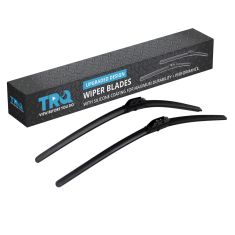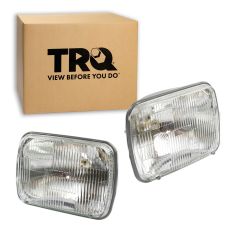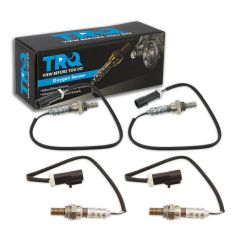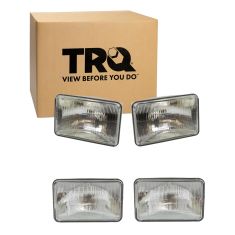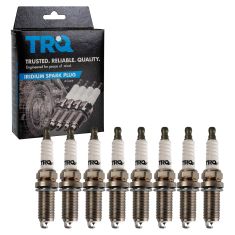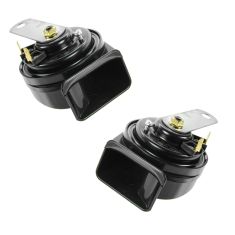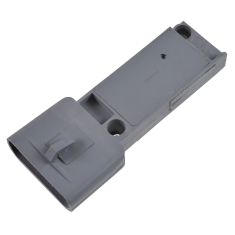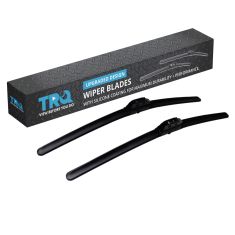Ford Thunderbird
-
Notify When Available$34.95Save 31%List $50.95 Save $16.00Brand: TRQ - WPB54571$34.95Save 31%List $50.95 Save $16.00
-
Notify When Available$51.95Save 16%List $61.95 Save $10.00Brand: TRQ - HLA93557$51.95Save 16%List $61.95 Save $10.00
-
Notify When Available
Replaces Ford Lincoln Mercury Jaguar 4 Piece O2 Oxygen Sensor Set TRQ OSA61637
Brand: TRQ- OSA61637$119.95Save 13%List $137.95 Save $18.00Brand: TRQ - OSA61637$119.95Save 13%List $137.95 Save $18.00 -
Notify When Available$149.95Save 31%List $217.95 Save $68.00Brand: TRQ - FIA60331$149.95Save 31%List $217.95 Save $68.00
-
Notify When Available$84.95Save 11%List $95.95 Save $11.00
Replaces 4 Piece Headlight Set TRQ LKA93536
Brand: TRQ - LKA93536$84.95Save 11%List $95.95 Save $11.00 -
Notify When Available$64.95Save 13%List $74.95 Save $10.00
Replaces 8 Piece Spark Plug Set TRQ SPA02187
Brand: TRQ - SPA02187$64.95Save 13%List $74.95 Save $10.00 -
Notify When Available$38.95Save 24%List $50.95 Save $12.00
Replaces Ignition Control Module TRQ ICA61375
Brand: TRQ - ICA61375$38.95Save 24%List $50.95 Save $12.00 -
Notify When Available$64.95Save 18%List $78.95 Save $14.00Brand: TRQ - ELA17620$64.95Save 18%List $78.95 Save $14.00
-
Notify When Available$34.95Save 20%List $43.95 Save $9.00Brand: TRQ - ICA61369$34.95Save 20%List $43.95 Save $9.00
-
Notify When Available$34.95Save 29%List $48.95 Save $14.00Brand: TRQ - WPB54556$34.95Save 29%List $48.95 Save $14.00
The Thunderbird Generates a Storm
It was sporty and stylish alike and found attractive by many folks. A sensational hit for Ford, the Thunderbird breathed life into a desolate area of the market. In 1955, the youth had something to rev and the older generations had something to show off. It seated two and came with a powerful 292ci V8 with 193 horsepower and solid suspension that allowed for an exceptionally smooth ride at high speeds. It came with a removable hard top or a soft top and was advertised as a "personal luxury car." Consumers flocked, and a sophisticated exterior design and low Ford price tag only helped cultivate the success of the Thunderbird.
The T-Bird's Flight
In 1958, Ford wanted to push away from an upper-middle class sport car and create a more family orientated automobile, so the new model had rear bench seats, dual headlights, and a squared body to appeal to a wider audience. A coupe hardtop model was also available, and the engine performance grew with a 352ci V8 with 300 horsepower. In 1958, the T-bird won Motor Trend's "Car of the Year" award. It was the first specific model line to win the award. Previously the award had been given to an auto company as a whole.
For most of the following generations, the Thunderbird restyled itself nearly every three years. In '61, the T-Bird softened the fins and molded the front into a sharper, pointed edge. One of its biggest optional features was a "swing away" steering wheel that gave drivers more leeway when moving in and out of the car. To accommodate the early model years' admirers, the following year also introduced a roadster package. It came with two seats, chrome-spoked rims, and a 390ci V8 rated at 340 horsepower. In '64, Ford went for a more aerodynamic look, and the Thunderbird received a boxier restyle. A 390ci V8 with 330 horsepower came as an optional engine, and improvements included windshield washers, reclinable seats, and front disc brakes. The convertibles were discontinued at the end of '66, thus making them a highly desired collectible.
In '67, the T-birds grew in size and offered more room, now allowing up to six passengers. The unibody design was replaced with an on-frame construction, and a new four-door model came with suicide doors. However, Ford would stick with the two-door idea, leaving four-doors behind in the ‘70s. As emissions restrictions tightened, the Thunderbird dropped in power. A pointed fascia now protruded from the tip of the car like a beak, and the bumper was nearly hidden underneath. It continued to extend in length and width and had now reached its highest point in size. To accommodate the large body, it came with a 460ci V8. By the end of the decade, the Thunderbird was the epitome of luxury, comfort, and safety with four-wheel disc brakes, a moon roof, power windows and seats, and a comfortable padded interior. During a time where fuel-efficient cars were on the rise, Ford downsized the Thunderbird to look much like it had in the past, and it became the best selling luxury sedan in America.
Ford continued to downsize into the ‘80s. The Thunderbird was built on the new Fox platform and dropped the engine size down to a 255ci six-cylinder for the base model. The exterior molded into a much more aerodynamic style for '83, and continued to morph into the sleek style commonly seen today. The improved aerodynamics led the Thunderbird to racing success in NASCAR. In 1987, Billy Elliot set the record for fastest lap in stock car history with a 212 miles per hour average speed over a lap of Talladega. That record still stands. Elliot won the NASCAR championship in 1988. Over the course of the ‘90s, though, the Thunderbird began to lose that natural spunk and the line was discontinued in '97.
It would not be gone for long. The Thunderbird was reborn for a short amount of time from '02-'05 in an attempt to recreate the sensation that it stirred up in the ‘50s. It came as a two-seater convertible with a 3.9L V8, a removable hardtop, porthole windows, and rounded headlights. A true American car, the final Thunderbird rolled out in 2005, fifty years after being introduced. After five incredible decades, the Ford Thunderbird is remembered for its exceptional performance, lavish looks, and legendary status.
